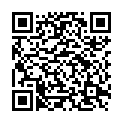|
|
|
| Module code: MST401 |
|
1V+1PA (2 hours per week) |
|
2 |
| Semester: 4 |
| Mandatory course: yes |
Language of instruction:
German |
Assessment:
Written exam, project work
[updated 02.08.2012]
|
MST401 Mechatronics and Sensor Technology, Bachelor, ASPO 01.10.2005
, semester 4, mandatory course
|
30 class hours (= 22.5 clock hours) over a 15-week period.
The total student study time is 60 hours (equivalent to 2 ECTS credits).
There are therefore 37.5 hours available for class preparation and follow-up work and exam preparation.
|
Recommended prerequisites (modules):
MST103 Mathematics I
MST203 Mathematics II
MST302 Mathematics III
[updated 02.08.2012]
|
Recommended as prerequisite for:
|
Module coordinator:
Prof. Dr. Barbara Grabowski |
Lecturer: Prof. Dr. Barbara Grabowski
[updated 01.10.2005]
|
Learning outcomes:
The aim of this course of lectures is to use practical examples to teach students about how the methods of higher mathematics – particularly in the fields of numerical mathematics and statistics – can be applied to solve real engineering problems.
After completing this module, students will be in a position to use MATLAB and SIMULINK to solve small engineering problems based on the measurement data sets provided and to create a professional written record of their solution.
[updated 02.08.2012]
|
Module content:
1. Introduction to MATLAB
1.1 … Vector and matrix calculus; generating graphics
2. Interpolation (Newton polynomials, spline functions)
2.1… Mini project
3. Data fitting (least squares)
3.1… Linear data-fitting functions
3.2… Nonlinear data-fitting functions
3.3… Mini project
4. Simple statistical measures for one, two, and more than two random variables
4.1…Mini project
5. Introduction to numerical differentiation and integration
5.1 …Mini project
6. Introduction to SIMULINK
6.1… Solving initial value problems using SIMULINK
6.2…Mini project
[updated 02.08.2012]
|
Teaching methods/Media:
Lectures, problem-solving exercises, project work
[updated 02.08.2012]
|
Recommended or required reading:
1. Preuss/Wenisch, Numerische Mathematik, Fachbuchverlag, 2001
2. Faires/Burden, Numerische Methoden, Spektrum Akademischer Verlag, 2000
3. Gramlich/Werner, Numerische Mathematik mit MATLAB, dpunktverlag, 2000
4. Beucher, MATLAB und SIMULINK lernen, Addison-Wesley, 2000
5. Bartsch H.-J., Taschenbuch Mathematischer Formeln, Fachbuchverlag Leipzig, 2003
Materials
1. http://www.htw-saarland.de/fb/gis/people/bgrabowski/vorles/mathe.htm
(only accessible from within the university)
2. http://www.htw-saarland.de/fb/gis/mathematik/
Lecture notes (set 1) and useful formulae (set 1) on descriptive statistics
[updated 02.08.2012]
|


